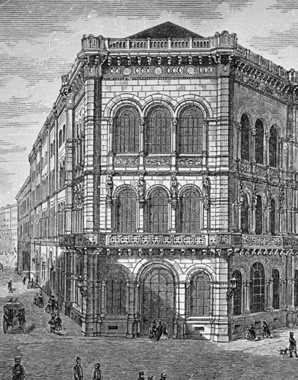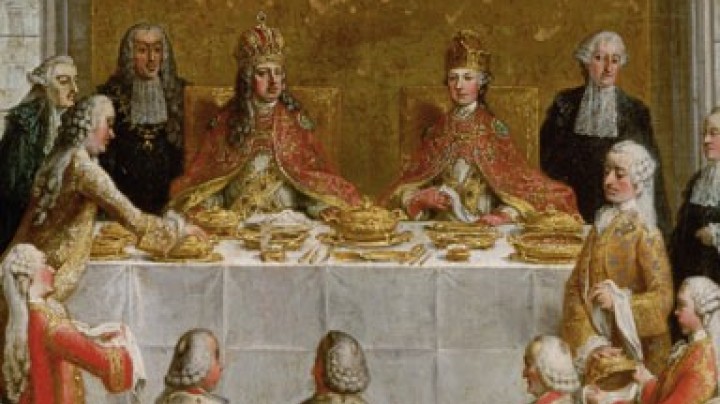As sweet as sugar – from luxury item to article of mass consumption
A table laid without an ornamental centrpiece made of sugar was as unthinkable for courtiers of the Baroque period as a twenty-first century Easter without chocolate eggs and rabbits.
Today it may have a bad reputation as a cause of addiction and obesity, but for a long time sugar was a prestigious commodity reserved for the ruling classes. At the turn of the fifteenth to the sixteenth century Maximilian I appointed a Dutch confectioner for his Court in Innsbruck, and his grandson Ferdinand I set up a Court confectionary, where conserves and elaborate cakes were made. Just how important sugar was for the Habsburgs is shown by the fact that there is a Confectioners’ Staircase in the Hofburg (Imperial Palace) in Vienna. In the Baroque period tables were decorated with elaborate ornamental sugar centrepieces which took the form of castles or even entire landscapes. It was also considered by the Court and the aristocracy to be a sign of luxury to sweeten hot beverages such as coffee, tea and chocolate, which were in themselves expensive. Sugar was expensive too, but nevertheless so well-liked that it was used not only to sweeten many dishes but also as the basis for newly invented ones.
However, most people could not afford sugar and it was only very rarely an ingredient in their meals. This is shown by the figures for the consumption of sugar: around 1770 just one quarter of a kilogram was consumed per head per year in Austria, while in Hungary and the Bánát of Temesvár the figure was a mere one tenth of a kilogram. From the middle of the nineteenth century sugar lost its exclusivity. As a result of being mass produced from indigenously grown sugar beet it no longer had to be imported. The price of sugar fell rapidly as production expanded, with the sugar beet industry becoming one of the most important industries in the Habsburg Monarchy. As sugar became cheaper it turned into an article of mass consumption, becoming an important ingredient in the food prepared both by the peasantry and by the lower social classes in general. By 1910 the average annual consumption of sugar had risen to eighteen kilograms per head.














